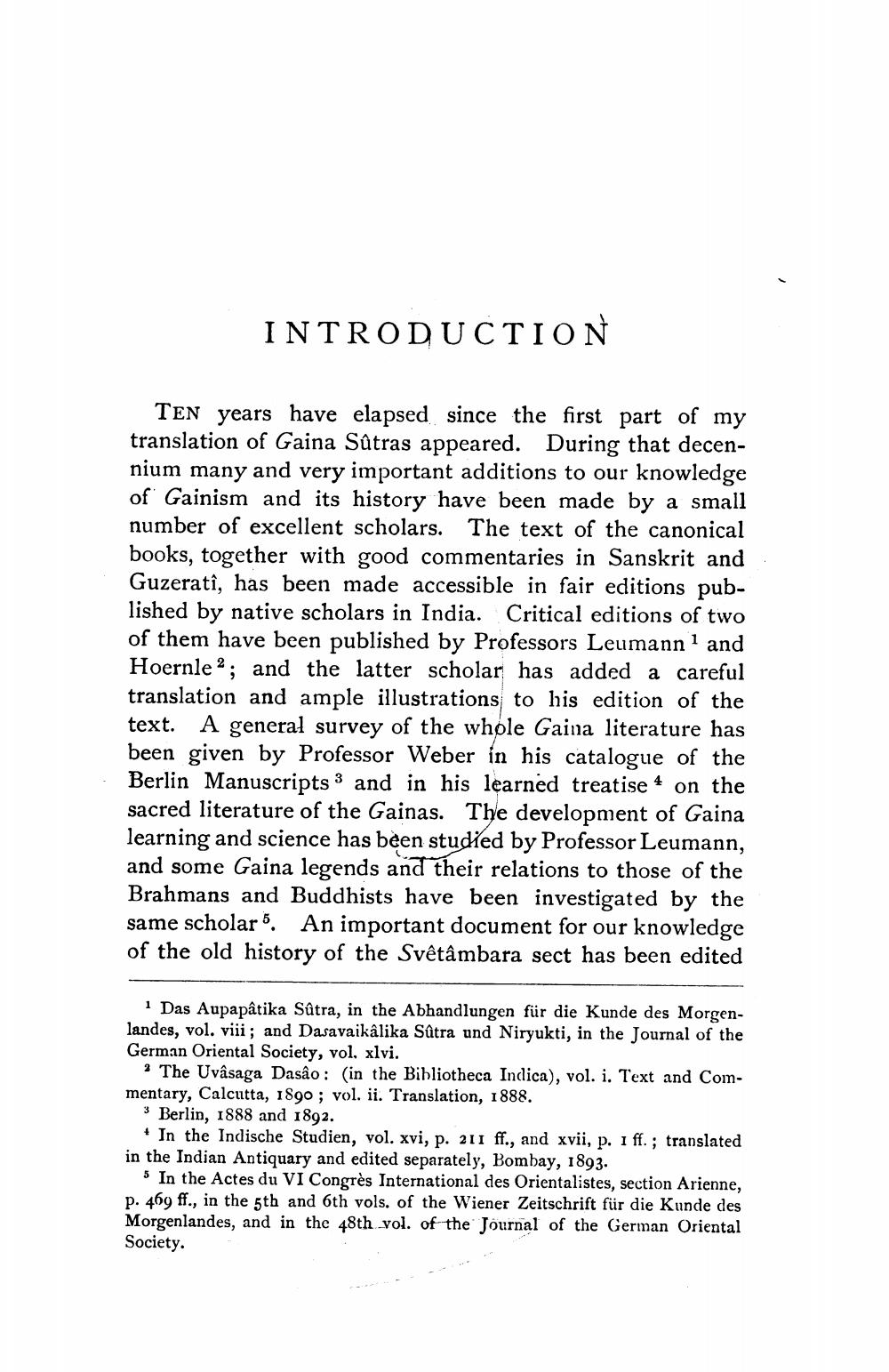________________
INTRODUCTION
TEN years have elapsed since the first part of my translation of Gaina Sûtras appeared. During that decennium many and very important additions to our knowledge of Gainism and its history have been made by a small number of excellent scholars. The text of the canonical books, together with good commentaries in Sanskrit and Guzeratî, has been made accessible in fair editions published by native scholars in India. Critical editions of two of them have been published by Professors Leumann 1 and Hoernle?; and the latter scholar has added a careful translation and ample illustrations to his edition of the text. A general survey of the whole Gaina literature has been given by Professor Weber in his catalogue of the Berlin Manuscripts 3 and in his learned treatise 4 on the sacred literature of the Gainas. The development of Gaina learning and science has been studied by Professor Leumann, and some Gaina legends and their relations to those of the Brahmans and Buddhists have been investigated by the same scholar 5. An important document for our knowledge of the old history of the Svêtâmbara sect has been edited
i Das Aupapâtika Sûtra, in the Abhandlungen für die Kunde des Morgenlandes, vol. viii; and Dasavaikâlika Sûtra und Niryukti, in the Journal of the German Oriental Society, vol. xlvi.
The Uvâsaga Dasâo: (in the Bibliotheca Indica), vol. i. Text and Commentary, Calcutta, 1890 ; vol. ii. Translation, 1888.
3 Berlin, 1888 and 1892.
* In the Indische Studien, vol. xvi, p. 211 ff., and xvii, p. 1 ff.; translated in the Indian Antiquary and edited separately, Bombay, 1893.
5 In the Actes du VI Congrés International des Orientalistes, section Arienne, p. 469 ff., in the 5th and 6th vols. of the Wiener Zeitschrift für die Kunde des Morgenlandes, and in the 48th vol. of the Journal of the German Oriental Society.




